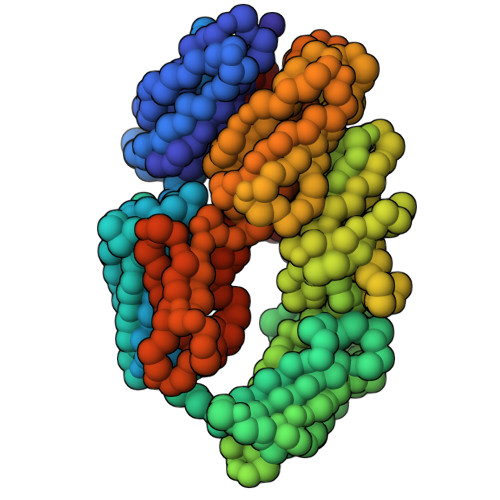Structure of Complement C3(H2O) Revealed By Quantitative Cross-Linking/Mass Spectrometry And Modeling.
Chen, Z.A., Pellarin, R., Fischer, L., Sali, A., Nilges, M., Barlow, P.N., Rappsilber, J.(2016) Mol Cell Proteomics 15: 2730-2743
- PubMed: 27250206
- DOI: https://doi.org/10.1074/mcp.M115.056473
- Primary Citation of Related Structures:
8ZZL - PubMed Abstract:
The slow but spontaneous and ubiquitous formation of C3(H2O), the hydrolytic and conformationally rearranged product of C3, initiates antibody-independent activation of the complement system that is a key first line of antimicrobial defense. The structure of C3(H2O) has not been determined. Here we subjected C3(H2O) to quantitative cross-linking/mass spectrometry (QCLMS). This revealed details of the structural differences and similarities between C3(H2O) and C3, as well as between C3(H2O) and its pivotal proteolytic cleavage product, C3b, which shares functionally similarity with C3(H2O). Considered in combination with the crystal structures of C3 and C3b, the QCMLS data suggest that C3(H2O) generation is accompanied by the migration of the thioester-containing domain of C3 from one end of the molecule to the other. This creates a stable C3b-like platform able to bind the zymogen, factor B, or the regulator, factor H. Integration of available crystallographic and QCLMS data allowed the determination of a 3D model of the C3(H2O) domain architecture. The unique arrangement of domains thus observed in C3(H2O), which retains the anaphylatoxin domain (that is excised when C3 is enzymatically activated to C3b), can be used to rationalize observed differences between C3(H2O) and C3b in terms of complement activation and regulation.
- From the ‡Wellcome Trust Centre for Cell Biology, Institute of Cell Biology, School of Biological Sciences, University of Edinburgh, Edinburgh EH9 3BF, UK;
Organizational Affiliation:
















